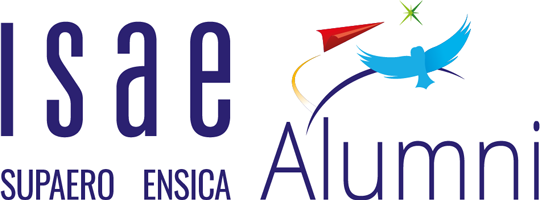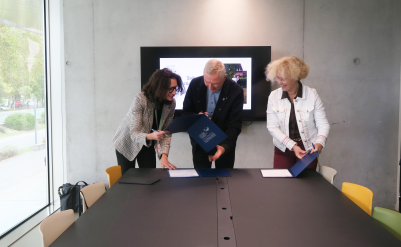News

Tribute to Marc PELEGRIN (S 1949)
The year 2024 is off to a decidedly bad start!
It is with great sadness that I pass on to you Marc Pélegrin's death announcement, published in the newspaper "Le Monde" last night, which is particularly sober and succinct.
I won't insult you by reminding you who Marc was. He was known as "the white wolf" not only in Aeronautics and Space circles (Ingénieur Général de l'Armement, airplane pilot, former Director General of SupAéro and mastermind of the school's transfer from Paris to Toulouse in 1968, creator of C.E.R.T. founding member of the Académie de l'Air et de l'Espace and Chairman of its "Foresight" section, etc.), but more generally in scientific circles worldwide (member of the Académie Française des Sciences).
But I'm still going to evoke a few personal memories, especially for younger people who may not have known him as well.
I'm one of the SupAéro students who had the immense good fortune to have him as a teacher. Along with Jean-Claude Wanner, he was one of my two best teachers at the school, and thanks to his incomparable charisma and unrivalled talent for popularization, he was able to make us understand the thousand subtleties of the disciplines he taught: "Servo Systems" (we didn't yet call them "Automatics", let alone "Robotics", but they already had all the ingredients) and "Computer Design and Use".)
I remember with emotion that in 1966, after having each of us "invent" the flowchart of a computer structure, he had us write an adapted "machine language" and program small aerodynamics and resistance of materials calculations!
He was one of three young Air Force Engineers (along with Gilles and Decaulnes) sent on mission in 1944 or 1945 to the best American universities to learn and, on their return, bring France up to standard in these fields.
The course book they published at the time is still, twenty years on, the "Bible" of slave systems for the students in my class!
(For the record, the following year, 1945 or 1946, it was Jean Carpentier who would be sent to the United States, and in his own time would add another essential stone to our edifice. In the early 1980s, as Director of Research and Technological Studies at the D.G.A., he was the driving force behind the French government's purchase of ONERA's first parallel supercomputer, the Cray One (the most powerful in the world at the time), which was pooled at Châtillon for the benefit of the "big four" French aerospace companies: Onera, Dassault, SNECMA and Aerospatiale/Toulouse.
This presupposed the creation of a high-speed computer link - we were proudly talking about 1 MB/s at the time! This involved a 700 km link from Blagnac to Châtillon (350 amplifiers/repeaters, one every 2 km, and experimental fiber optics all along the way, for the first time in France in 1982), and another link of just a few km from Saint-Cloud (Dassault) to Châtillon, but totally protected from the enormous electromagnetic interference coming from EDF's largest 200,000 volt interconnection pole and from remote control pulses on the Vélizy/Villacoublay side.
It had to be done, they did it!
Jean Carpentier was able to convince the Délégués Généraux à l'Armement, Henri Martre and then Emile Blanc, and through them the Ministers of Defense, who in turn obtained these magnificent technical achievements from the Ministers of Public Works and Telecommunications and France Télécom.
I was there, as an advocate for the "customers" and a "small hand" on the file, and I can testify to this (it took a whole night to transmit the complete detailed geometry and structure file for an Airbus from Blagnac to Châtillon, a few hours to make the calculations requested in Châtillon, and another night to send the detailed results to Blagnac.
But it worked! Glory to our "Great Old Ones"! ).
To return to Marc Pélegrin, in addition to being an immense scientist and an extraordinary teacher, he had "his feet on the ground" and was an equally brilliant "manager".
From 1966 to 1968, he organized the transfer of SupAéro to Toulouse and, at the same time, because a major higher education establishment cannot survive without the support of top-level research teams, he founded the C.E.R.T. (Etablissement de Recherche de l'ONERA à Toulouse) using elements from the Villacoublay C.E.R.M.A. and others created from scratch on site.
A true environmentalist ahead of his time (and inspired by American universities), he also insisted that there should be more green spaces than buildings on the Rangueil campus.
This is why, as a reward, he was appointed the first General Manager of both the SupAéro and CERT establishments in Toulouse.
Others, more competent than I and especially younger, will be able to speak better than I about this and about Marc Pélegrin as a friend of André Turcat and co-founder of the Académie de l'Air et de l'Espace, and also about his reception at the Académie des Sciences in Paris, as well as his activities as a teacher abroad (at the Centre d'Essais Aéronautique de Sao Paulo dos Campos and at Embraer in Brazil in particular).
I leave the feather to them.
On a human level, I'd like to point out something that has always impressed me: unlike some parents who are upset when their children don't follow a path as brilliant as their own, Marc and his wife Renée have always let their seven children choose their studies and careers freely, and have always been satisfied as long as they corresponded to real vocations, even if they weren't at the highest scientific level.
...
Marc, as you leave us for your last flight, I have only one word to say to express my admiration for you and all those who knew you: Bravo and thank you for all you have done for France and the French aerospace sector in particular!
Rest in peace!
Jean-Michel Duc,
January 6, 2024.

 5
5

















No comment
Log in to post comment. Log in.